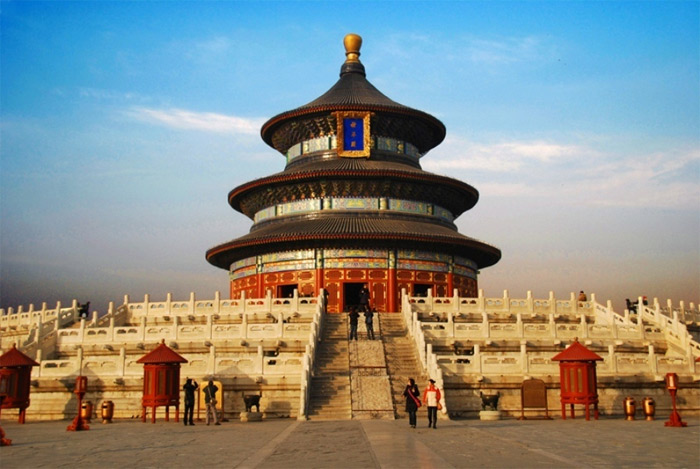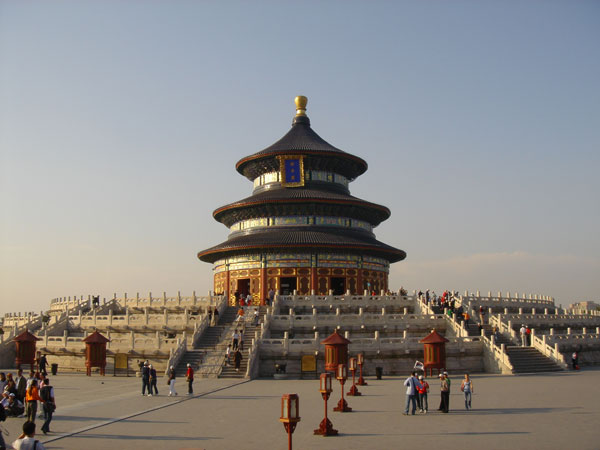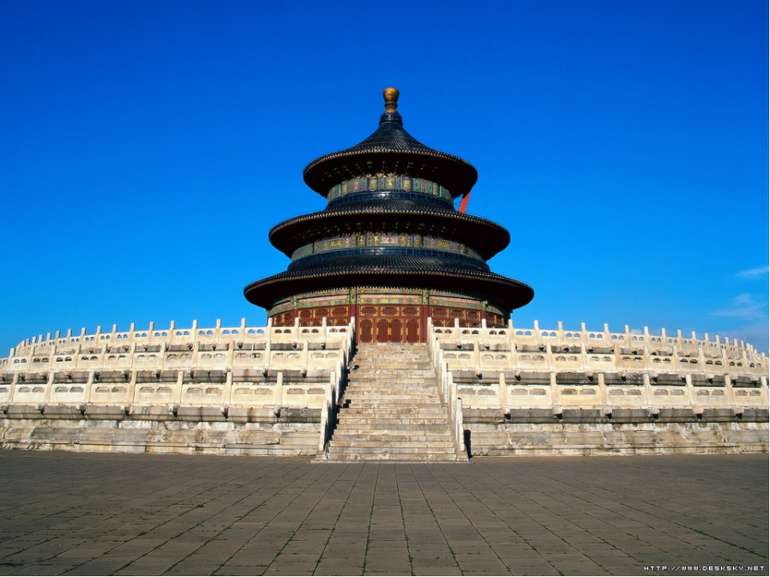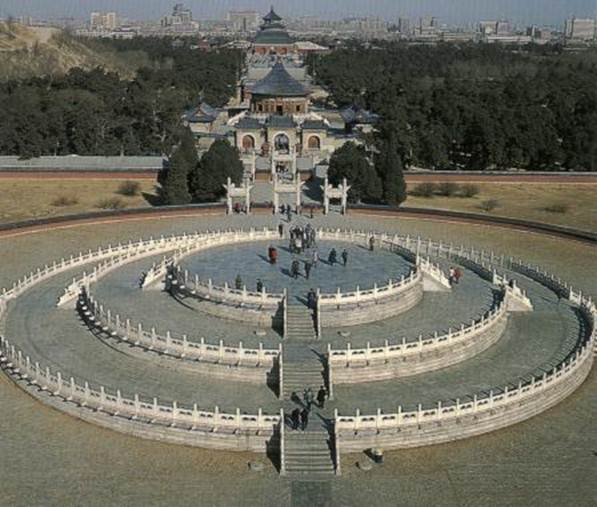Thien Dan - World Cultural Heritage in China
Unesco's Science, Education and Culture Organization has recognized China's Tian Dan as a World Cultural Heritage in 1998.

Thien Dan, also known as the heavenly shrine , is a complex of buildings in the southeastern city of Beijing. If visiting Beijing, places such as Truong Thanh, Co Cung and Thien Dan are the must-visit places, because these architectures represent the supreme level of ancient Chinese architecture. In order to pray for the favorable rain and wind, the peaceful and peaceful people, every year, the Chinese kings have celebrated the prayers of heaven and earth and gods, in which sacrifices are the most important.

The ancient Chinese people believed that the king was the son of heaven so the King's effect was "Heavenly death ". The Chinese kings took the status of " Thien Tu " to dominate the people, manage the nation. Heavenly activities also became their privilege, people were not followed.

Thien Dan was built in 1420, where the Ming and Qing emperors (1368-1911) performed sacrifices. Thien Dan is located south of the Cung Cung, 5 times larger than the palace.
Thien Dan's architecture was built to symbolize heaven and earth . The southern end wall of Thien Dan is a square, symbolizing the earth, the northern hemisphere's northern wall symbolizes heaven, this design originates from the ancient Chinese " square earth " thought. Thien Dan is divided into the chord and the herd. The main architectures of Thien Dan are concentrated in the two north and south ends of the middle axis in the inner region, namely Vien Khuyen, Hoang Cung Vu and Ky Nien electricity.

Vien Khưu is a circular stone tower consisting of three floors, each floor has a stone handrail, and the ground of the round-robed tablet is the center for the king to celebrate the sacrifice . A royal sacrifice for the king was done very elaborately and elaborately. Beginning of the ritual often takes place before the dawn of the lunar winter day (around December 22), the king himself came to host the sacrifice. When making ceremonies, the lantern must hang lanterns before, inside the candle burns more than a meter long. The incense burner is located in the southeast corner of Khưu, these incense burners are mainly used to burn animals and cloths. In the process of sacrificing heaven, incense smoke suspiciously, drum music sounding, very solemn atmosphere. Hoang Cung Vu in the north of Khưu is a small palace with a circular floor, the day in which the gods are placed, around the Royal Palace there is a round wall that is round, this is the wall. Famous reply . This reverberating wall is very miraculous, if you stand on one side, just say that on the other side can be heard clearly.

 Sophisticated carved designs inside Thien Dan
Sophisticated carved designs inside Thien Dan
Another cluster of architectural offerings of Thien Dan is Ky Nien electricity , which is a large circular electricity with three roofs, built on a three-story circular foundation. According to the record, the Electricity of the Year is a place for the king of the summer to come and pray for the year. Therefore, the architecture of the Electric Age is also related to agricultural culture. For example, the four natural pillars in the power heard represent the spring and autumn and winter seasons; due to an ancient Chinese view of a 12-hour day, the 12 columns on the outside of the first floor's roof represent 12 hours a day; 12 columns in the middle floor represent 12 months of the year; a total of 24 columns, symbolizing 24 air periods. In addition to the main architectural cluster is the Khưu and the Age of electricity, there is also the Mythical Place which is the residence of musicians and dancers, the killing department is the place to raise and slaughter animals for sacrifice.

Architecture as well as the interior decoration of Thien Dan is very unique, the color of architecture also has many breakthroughs. The palaces of Chinese kings were mostly covered with yellow roofs, symbolizing the right of the king. But the architecture of Thien Dan, the builders use the blue roof tile symbolizing heaven, as the main color of the architecture. As the roof of the revered wall, Hoang Cung Vu and Ky Nien's electricity as well as the two auxiliary electricity and the roof of the campuses are all blue glass roofs.
Thien Dan is world famous by its serious planning, special architectural structure, beautiful decoration, not only occupying an important position on Chinese architecture history but also a valuable heritage of that. gender. In 2005, Thien Dan invested 47 million yuan (US $ 5.9 million) to refurbish and remodel the Beijing Olympics in the summer of 2008.
- Di Hoa Vien - World Cultural Heritage in China
- Secrets - World Cultural Heritage in China
- Van Cuong stone cave
- Citadel and tomb Cao Cu Ly - Cultural heritage of China
- Cultural landscape of Bam - World Cultural Heritage in Iran
- Longmen Stone Cave - World Cultural Heritage in China
- The territory of Roy Mata - World Cultural Heritage at Vanuat
- Tomb of Qin Shihuang - China
- Zvartnots site - World cultural heritage in Armenia
- Potola Palace of China
- Lijiang town
- Hoang De and Hoanh Thon villages in Anhui
 Suzhou classic bonsai garden - China
Suzhou classic bonsai garden - China Chau Nguyen Dynasty
Chau Nguyen Dynasty Thai Son Mountain - World Wonder
Thai Son Mountain - World Wonder Ancient villages of Shirakawa-go and Gokayama
Ancient villages of Shirakawa-go and Gokayama